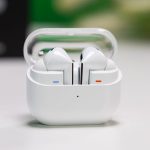Every time you chew gum, you’re not just freshening your breath. You’re also grinding synthetic materials that weren’t meant to go in your mouth. Most gums today are made from industrial-grade plastic compounds designed to mimic the chewiness of rubber. But these substances don’t stay in the gum base. As you chew, they break down into microscopic fragments that mix with your saliva and make their way into your digestive tract.
It doesn’t matter whether your gum is sugar-free or labeled “natural.” The problem is built into the base itself. Whether you chew to stay alert, curb your appetite or calm your nerves, you’re exposing your body to ingredients designed for durability, not digestion. What feels like a quick fix for stress or stale breath could be quietly feeding your system a steady stream of contaminants.
Understanding how gum impacts your health starts with recognizing what it’s made of and how it behaves once inside your mouth. From there, the effects ripple outward — into your jaw, your gut and even your mental clarity.
Dentists Say You’re Chewing Away at More Than Stress
A feature published by The New York Times explored how gum impacts more than just your breath.1 On the surface, chewing gum seems harmless, even helpful. But the benefits come with trade-offs, and some of those trade-offs involve your jaw, your digestion and your exposure to plastics.
• Healthy people of all ages chew gum, and many do it daily — Data from a survey of 3,150 U.S. teens and adults found that 61.8% had chewed gum in the past six months, averaging roughly one piece per day.2 For many people, gum is a daily ritual used to suppress appetite, calm nerves, freshen breath or sharpen mental focus. But while it might give you a temporary lift, it could also be causing strain you don’t feel until it’s too late.
• Saliva production is gum’s most-touted benefit — According to Dr. Peter Arsenault, a dentist and professor at Tufts University School of Dental Medicine, chewing gum boosts saliva output, which helps neutralize acids that wear away your teeth.3
Saliva also sweeps away food particles, which may improve breath and reduce bacteria buildup. A 2022 meta-analysis also showed that using xylitol-containing gum or candy three to five times daily after meals reduced cavity risk by 17%.4 Even if gum helps sweep away food bits and stimulate saliva, however, it shouldn’t take the place of real oral care like brushing and flossing.
• Chewing gum is used as a mental coping tool, but results are mixed — Some researchers found that chewing gum during learning improved test performance in a small study.5 Other evidence suggests it could help reduce stress in the short term, similar to tapping your fingers or bouncing your leg when nervous. However, there’s no strong evidence showing gum actually improves focus or reduces stress in a lasting way.
• Gum chewing may ease or worsen acid reflux, depending on the person — Dr. Aditi Stanton, a gastroenterologist in Cincinnati, said that saliva from gum chewing helps neutralize acid in the esophagus, improving symptoms in some people.6 But for others, chewing relaxes the lower esophageal sphincter — the muscle that keeps stomach acid where it belongs.
When this muscle slackens, acid creeps up into your throat and causes heartburn. Chewing too aggressively also increases air intake, leading to bloating and burping.
Gum Chewing Isn’t Normal Chewing, and Your Jaw Knows the Difference
According to an article published by Cleveland Clinic, chewing gum is classified as a “parafunctional” activity, meaning it’s outside your body’s normal, necessary chewing function.7
Unlike chewing food, which has a clear purpose — breaking down food for digestion — chewing gum creates repetitive stress on your jaw joints and surrounding muscles. The more you chew, the more wear you place on these delicate structures, especially if you already have underlying joint issues.
• People with TMJ disorders are most at risk for gum-related pain — If you’ve ever felt jaw clicking, soreness, tension headaches, or aching around your ears, you might already be dealing with a temporomandibular joint disorder (TMJ). Dr. Karyn Kahn, DDS, from Cleveland Clinic, explained that gum chewing causes “temporomandibular disorders or makes existing conditions worse.”8
Even small shifts in the TMJ joint position create major discomfort for some individuals. For anyone with a history of clenching or grinding, the added strain from gum makes symptoms worse, not better.
• Overchewing forces your muscles and teeth out of balance — What starts as a casual piece of gum often becomes a source of chronic jaw dysfunction. The clinic noted that excessive chewing disrupts your muscle balance and causes misalignment in your joint and bite.
This imbalance often leads to fractured teeth, frequent headaches and long-term facial muscle fatigue. That’s a steep cost for a habit that most people assume is harmless. For those with TMJ dysfunction, the safest move is to avoid gum entirely.
• Sugar in gum is one of the original dental culprits — Chewing gum became wildly popular in the early 1900s, but it didn’t take long for oral health problems to follow. Sugar-fed bacteria in your mouth release acid, which erodes your enamel — the hard protective layer of your teeth. That erosion creates pathways for bacteria to infect the softer inner layers, sometimes leading to deep decay and root canals.
• Dry mouth relief from gum is real, but there are better solutions — Chewing gum does increase saliva, which helps people who suffer from dry mouth, a condition that increases risk of cavities and bad breath. But Kahn cautions that frequent gum chewing isn’t ideal for long-term dry mouth management. Drinking water regularly is a better option, especially for people with chronic dryness due to medications or medical conditions.
• Claims about gum improving stress or focus lack real scientific backing — The article also debunks a common myth: that gum improves focus, mood, or alertness. While some users report subjective benefits, current data doesn’t show strong or consistent results.9 If you’re reaching for gum to get through a long meeting or resist a snack, there are healthier and more effective ways to support your mental energy.
Chewing Gum Releases Plastic Into Your Mouth
A pilot study presented at the 2025 Spring Meeting of the American Chemical Society set out to measure how much plastic a person ingests from gum. The study tested five synthetic and five “natural” gum brands to track how many plastic particles were released into saliva after chewing.10
• Both synthetic and natural gums released similar amounts of microplastics — Surprisingly, gums marketed as “natural” were just as likely to shed plastic as their synthetic counterparts. Each piece released hundreds to thousands of particles during chewing.
The team found an average of 100 plastic particles per gram of gum, but some pieces released as many as 600 per gram. Given that most gum pieces weigh between 2 and 6 grams, that’s up to 3,000 microplastic particles per piece.
• Microplastics appeared early and in high volume — Researchers collected saliva samples every 30 seconds during a four-minute chew session, and a separate trial extended chewing to 20 minutes. They found that the vast majority — 94% — of the plastic particles detached in the first eight minutes.
The friction from chewing, not enzymes or saliva chemistry, caused the particles to break loose. That means even a single short session of gum chewing is enough to significantly increase your microplastic exposure.
• The particles were all common industrial plastics — The team identified the types of plastics released, which included varieties used in clothing, food packaging and manufacturing. Many of them are associated with hormone disruption, oxidative stress and inflammation in animal and cell studies.
• Chewing more gum means swallowing more plastic each year — Based on U.S. chewing habits — roughly 160 to 180 sticks per year — the researchers estimated that an average gum user could ingest 30,000 microplastics annually just from gum. That’s on top of the particles that come from food packaging, bottled water and air.
• Nanosized plastics were likely missed in the data — The researchers acknowledged that their methods only captured particles down to about 20 microns in size. Nanosized particles, which are smaller than a red blood cell, could be present in even greater numbers but were too small for this detection threshold.11 These smaller plastics are even more concerning because they pass through cell membranes and reach organs, including your brain.
Cut Gum to Cut Plastic — How to Break the Habit and Protect Your Health
If you chew gum every day, even sugar-free or “natural” brands, you’re likely ingesting thousands of plastic particles you don’t even know are there. The best thing to do right now is cut this source off at the root.
That means removing gum from your routine and replacing it with safer, smarter habits that won’t overload your body with plastics, strain your jaw or disrupt your digestion. Here’s how to make the switch without losing the focus, fresh breath or oral hygiene you were using gum for in the first place:
1. Replace gum with mouth-friendly habits that support saliva flow — You don’t need gum to freshen your breath. Try sipping water frequently, oil pulling with coconut oil or chewing on a small piece of raw ginger. These help stimulate saliva without introducing toxic plastics into your system. If you chew gum to manage dry mouth, frequent hydration and nasal breathing throughout the day will support moisture levels more safely.
2. Use fresh-breath tools that don’t damage your jaw — If you reach for gum after meals to mask odors, switch to a tongue scraper or a quick rinse with baking soda and water. These remove food particles and reduce odor-causing bacteria without grinding your TMJ or weakening your dental work. This is especially important if you’ve had crowns, fillings or braces, since gum chewing loosens or cracks them over time.
3. Retrain your brain with a replacement habit — If you chew gum out of stress or boredom, swap it with a different type of oral or hand-based rhythm. Try tapping your fingers, holding a smooth stone in your hand, sipping warm tea or doing a slow breathing sequence. The point is to redirect the nervous energy. You’ll still get the comfort, but you’ll avoid the inflammation and joint strain that come with gum chewing.
<!—
4. If you need help focusing, feed your brain instead — Gum isn’t what powers your mental clarity — glucose and hydration are. Instead of chewing through an afternoon slump, drink a glass of fresh juice or eat a piece of fruit. Your brain runs best on clean, quick-access carbs, not artificial sweeteners and synthetic plastic. Keeping your blood sugar steady is a far more effective way to stay alert without jaw tension or brain fog.
—>
4. Treat gum like a plastic exposure, because it is — If you’re trying to reduce toxins in your life, gum deserves the same level of scrutiny as plastic water bottles, food containers or synthetic beauty products. Even gums labeled “natural” still shed plastics into your saliva. So, ditch the daily dose. You’ll lighten your toxic burden and support your long-term energy, hormones and digestion in the process.
Frequently Asked Questions
Q: Is chewing gum really harmful to my health?
A: Yes, especially if you chew it regularly. Research shows that a single piece of gum releases up to 3,000 microplastic particles into your saliva. These plastics, commonly used in food packaging and industrial products, enter your digestive system and increase your overall toxic load. Gum is also linked to jaw strain, digestive issues and damage to dental work.
Q: What types of gum are safest to chew?
A: None are truly safe. Even gums marketed as “natural” were found to release just as many microplastics as synthetic brands. Both types contain industrial polymers. The act of chewing itself, not the ingredients alone, causes plastic particles to flake off and mix with your saliva.
Q: Does sugar-free gum offer any benefits?
A: Sugar-free gums with ingredients like xylitol do help increase saliva flow and reduce cavity risk by up to 17% when used after meals. But those benefits come with trade-offs, as the plastic exposure remains the same. Gum shouldn’t replace brushing and flossing.
Q: Why is gum bad for my jaw and digestion?
A: Chewing gum is classified as a “parafunctional” habit, meaning it places stress on your jaw outside its normal function. Over time, this leads to TMJ pain, headaches and even tooth fractures. Rapid chewing also causes you to swallow excess air, leading to bloating and burping.
Q: What’s the best way to stop chewing gum without losing the benefits?
A: Switch to safe, nontoxic habits like sipping water, oil pulling with coconut oil or chewing fresh herbs like parsley or ginger. If you chew to relieve stress, replace it with calming routines like breathing exercises or rhythmic hand movements. For energy and focus, opt for whole-fruit carbs or fresh juice. These nourish your brain without exposing you to synthetic chemicals and plastics.







